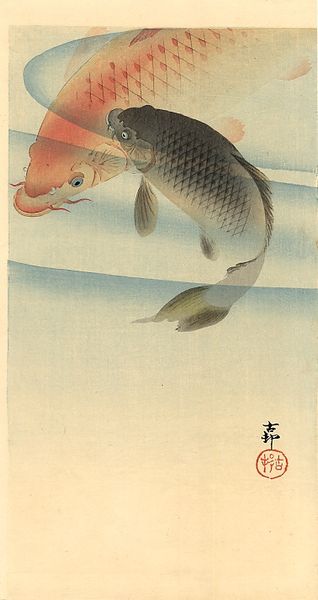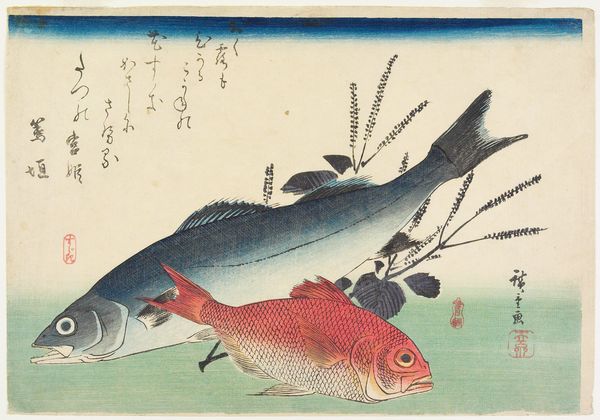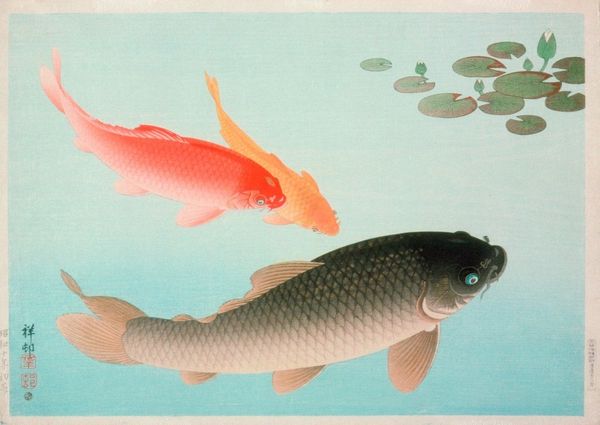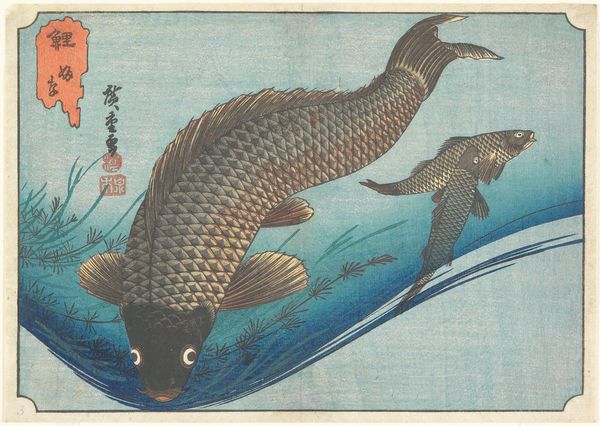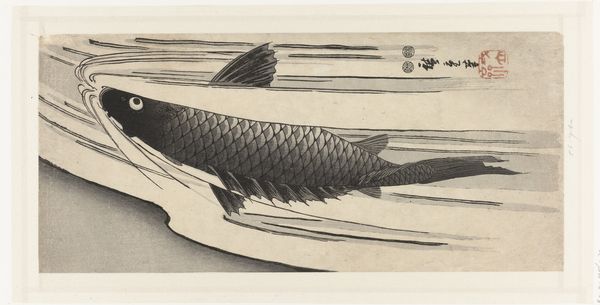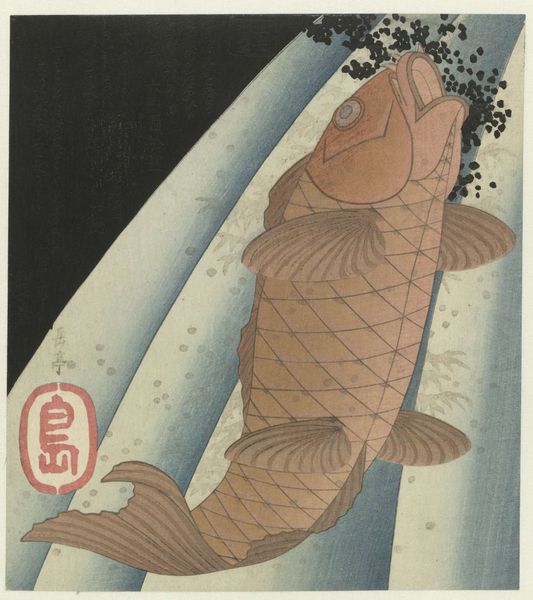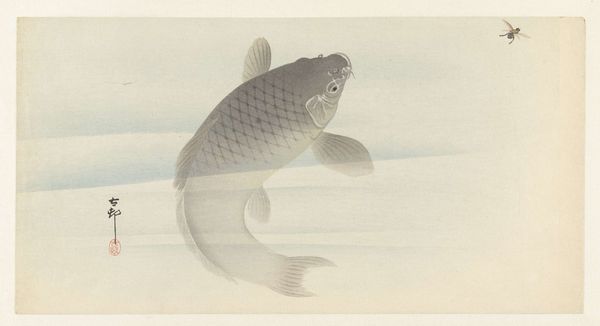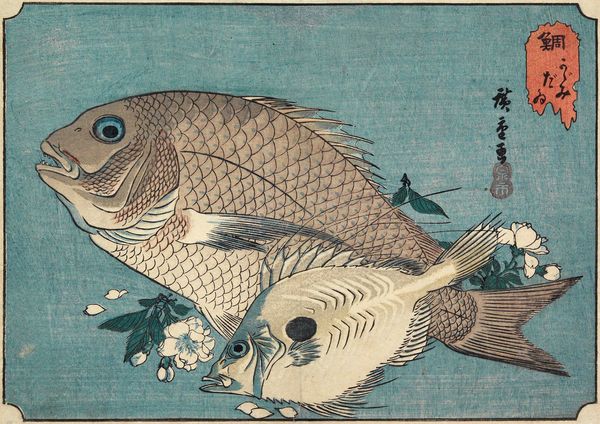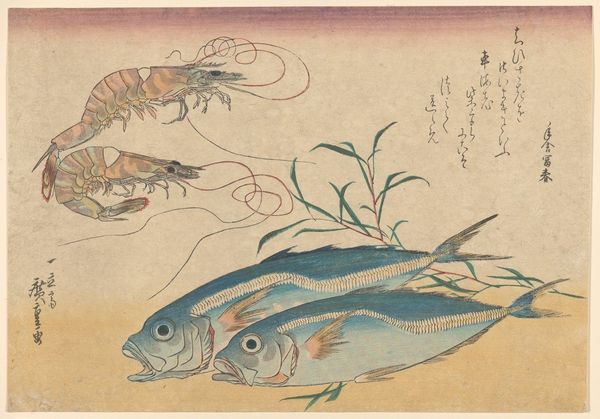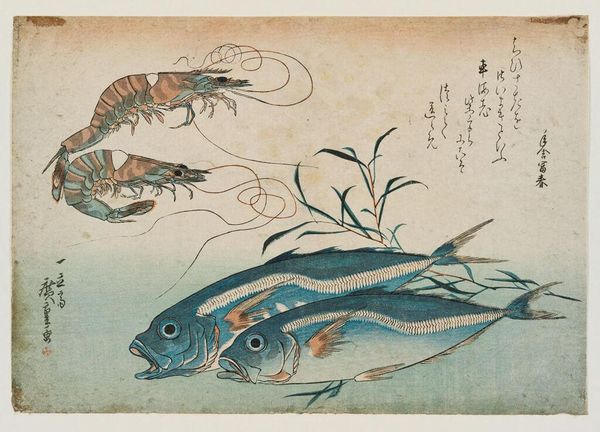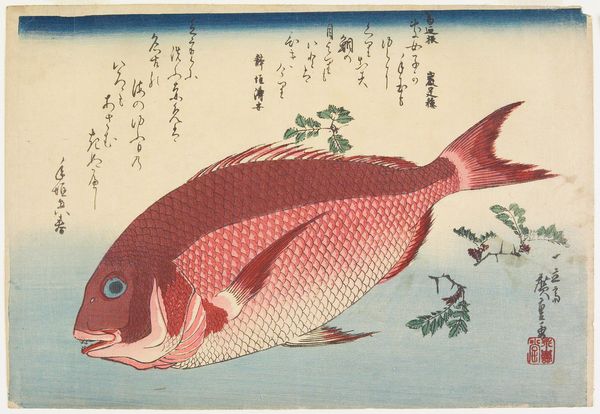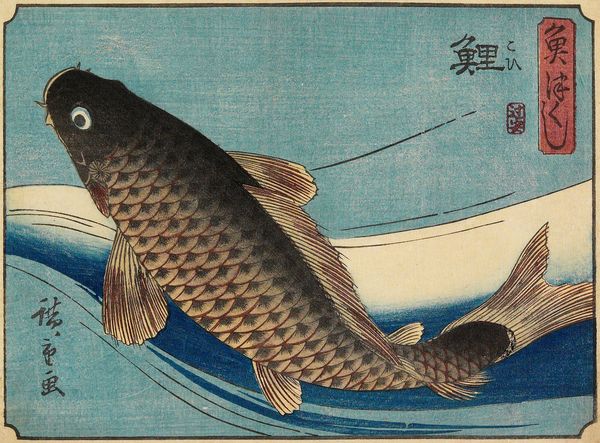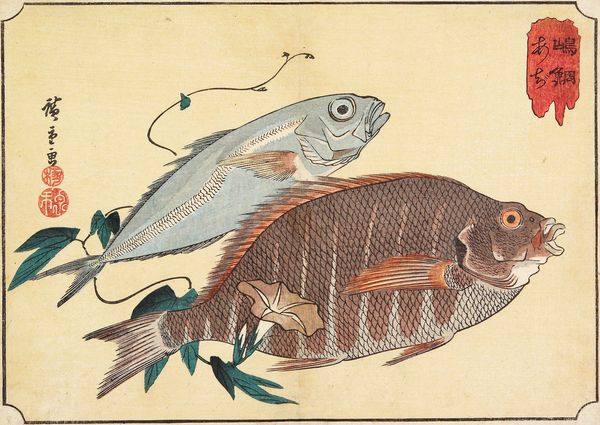
drawing, print, watercolor, woodblock-print
#
drawing
#
fish
#
water colours
# print
#
impressionism
#
asian-art
#
landscape
#
ukiyo-e
#
figuration
#
form
#
watercolor
#
coloured pencil
#
woodblock-print
#
orientalism
#
line
#
watercolour illustration
Copyright: Public domain
Ohara Koson made this woodblock print, titled "Golden Carp," sometime in the early 20th century. It depicts two carp swimming, one grey and one orange, in cool blue water with green plants above. During the Meiji era, from 1868-1912, Japan opened itself to Western styles and technologies, which brought significant political, social, and cultural changes. Artists like Koson navigated this fusion of traditional Japanese aesthetics and Western influences. Woodblock printing had been an established art form in Japan for centuries. The image's serene naturalism aligns with the shin-hanga movement, which revitalized traditional ukiyo-e woodblock printing by incorporating Western artistic elements like naturalism. The shin-hanga movement was patronized by publishers such as Watanabe Shōzaburō who helped promote it to a Western audience. The print reflects a growing interest in natural subjects, but one that was increasingly influenced by Western tastes and markets. The image also subtly critiques the earlier, more stylized traditions of Japanese art. To understand Koson’s work better, we need to examine the catalogues of prints that were circulating at the time, and the ways that publishers were marketing these works to international audiences.
Comments
No comments
Be the first to comment and join the conversation on the ultimate creative platform.
